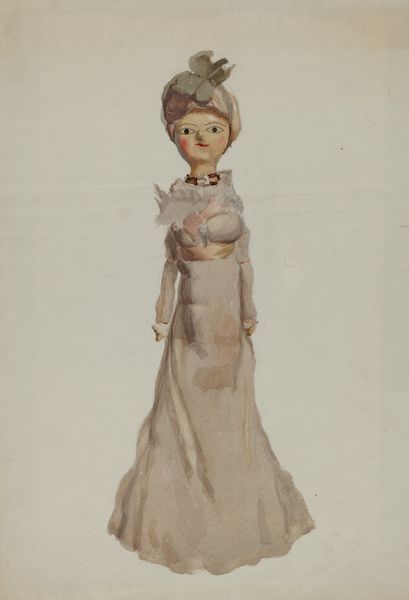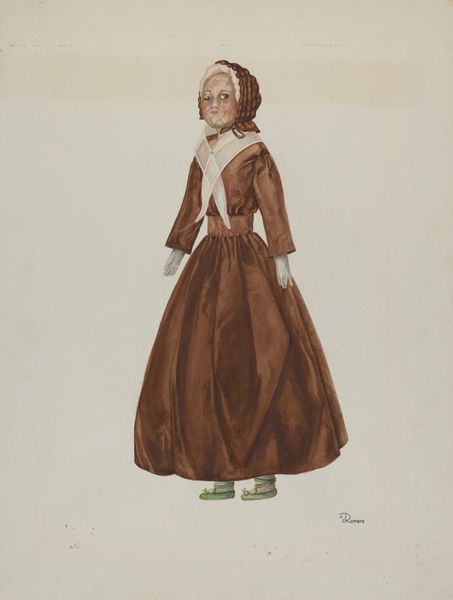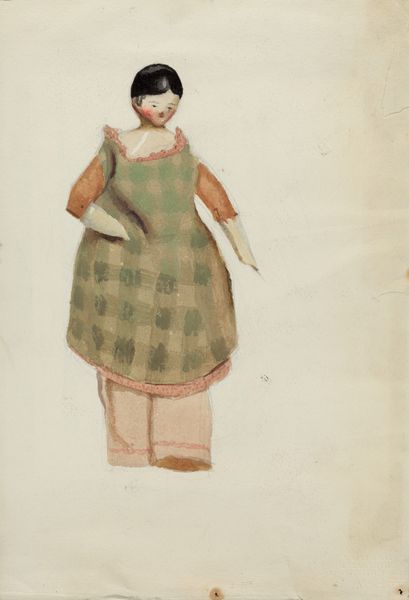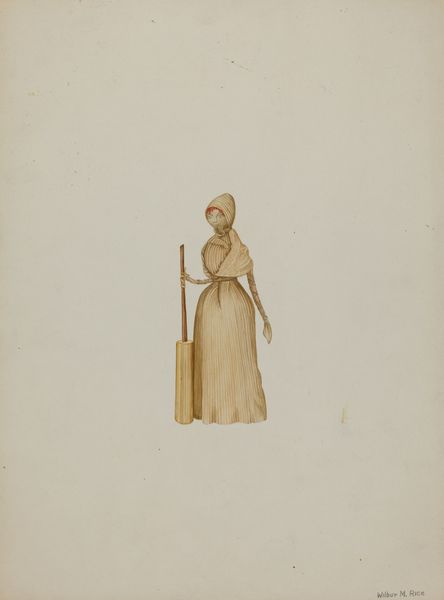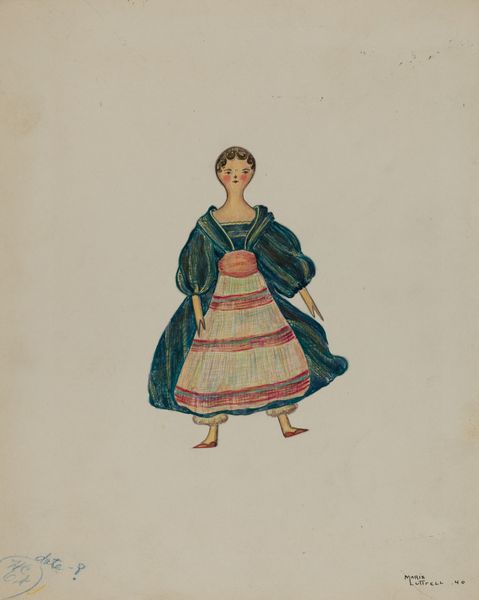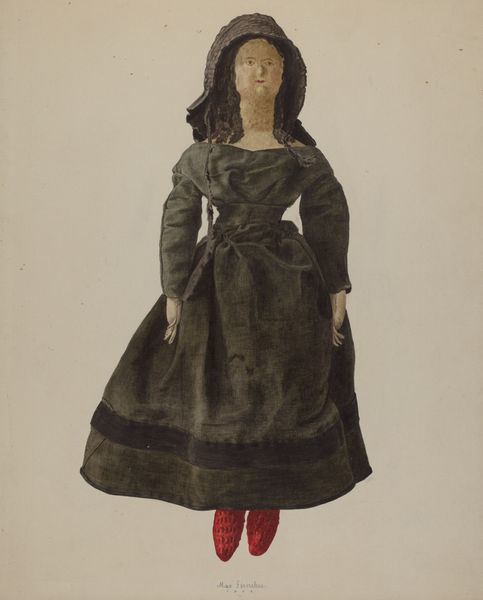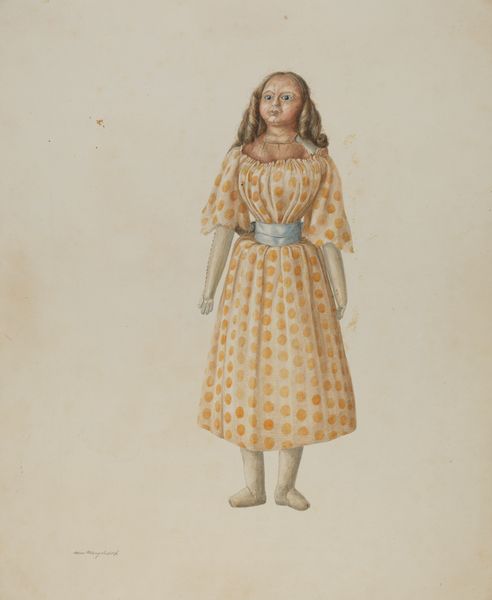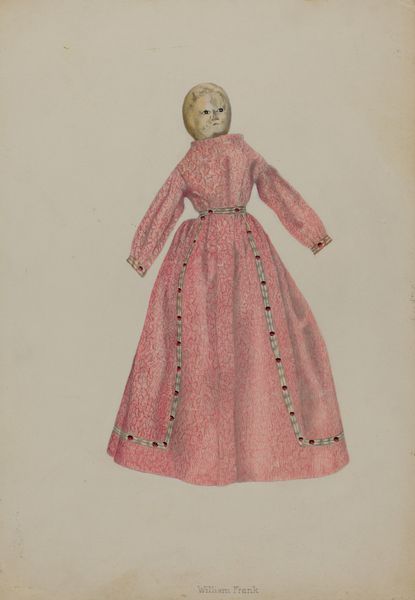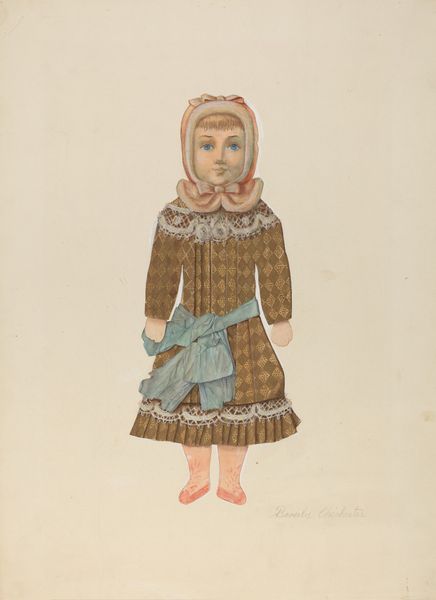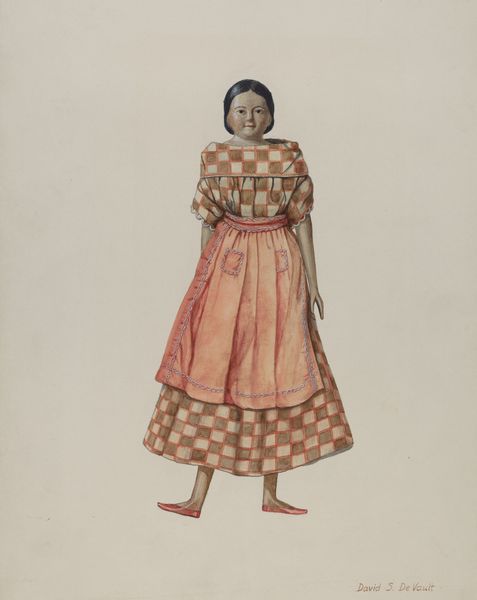
drawing, coloured-pencil
#
portrait
#
drawing
#
coloured-pencil
#
oil painting
#
coloured pencil
#
pastel chalk drawing
#
watercolour illustration
#
watercolor
Dimensions: overall: 35.6 x 27.9 cm (14 x 11 in.) Original IAD Object: 8 1/2" high
Copyright: National Gallery of Art: CC0 1.0
Editor: So, this is "Doll" by Max Fernekes, created sometime between 1935 and 1942, using colored pencil. It has this aged, almost faded quality that makes you think about the passage of time. What can you tell me about it? Curator: Well, let's consider the material reality of this image. Coloured pencil, often associated with childhood and craft, is elevated here to portraiture. What does it mean to render a doll, itself a manufactured object and potential child's plaything, in this medium? What is the economic background to Fernekes’ choice to create using the available materials and subject, challenging those conventions? Editor: That's interesting. I hadn't really thought about the choice of coloured pencil as significant. I suppose I assumed it was simply the artist's preference. Curator: It prompts us to consider the means of production. Was it an economic necessity in a time of scarcity? How might it represent the labor of making, the materiality of the artwork as separate to the subject? Consider the doll itself, its production, and then its representation with accessible, inexpensive materials. It seems that we can infer about how making or production is communicated in the drawing. Does this tell us a wider story on class, skill or manufacture during this period? Editor: So, you are saying it's less about the doll itself and more about what the drawing’s materiality tells us about that period? Curator: Exactly. The drawing’s flat affect is indicative of Fernekes drawing on what was readily available and economical during the time. How that connects with social status as we move further on down the 20th century, could even reflect a desire of wanting more but dealing with constraints. Editor: I guess it is a reflection on accessible artistic skills during times of uncertainty, very thought provoking! Curator: Indeed! And it underscores the complex relationship between art, craft, labor and social conditions.
Comments
No comments
Be the first to comment and join the conversation on the ultimate creative platform.
